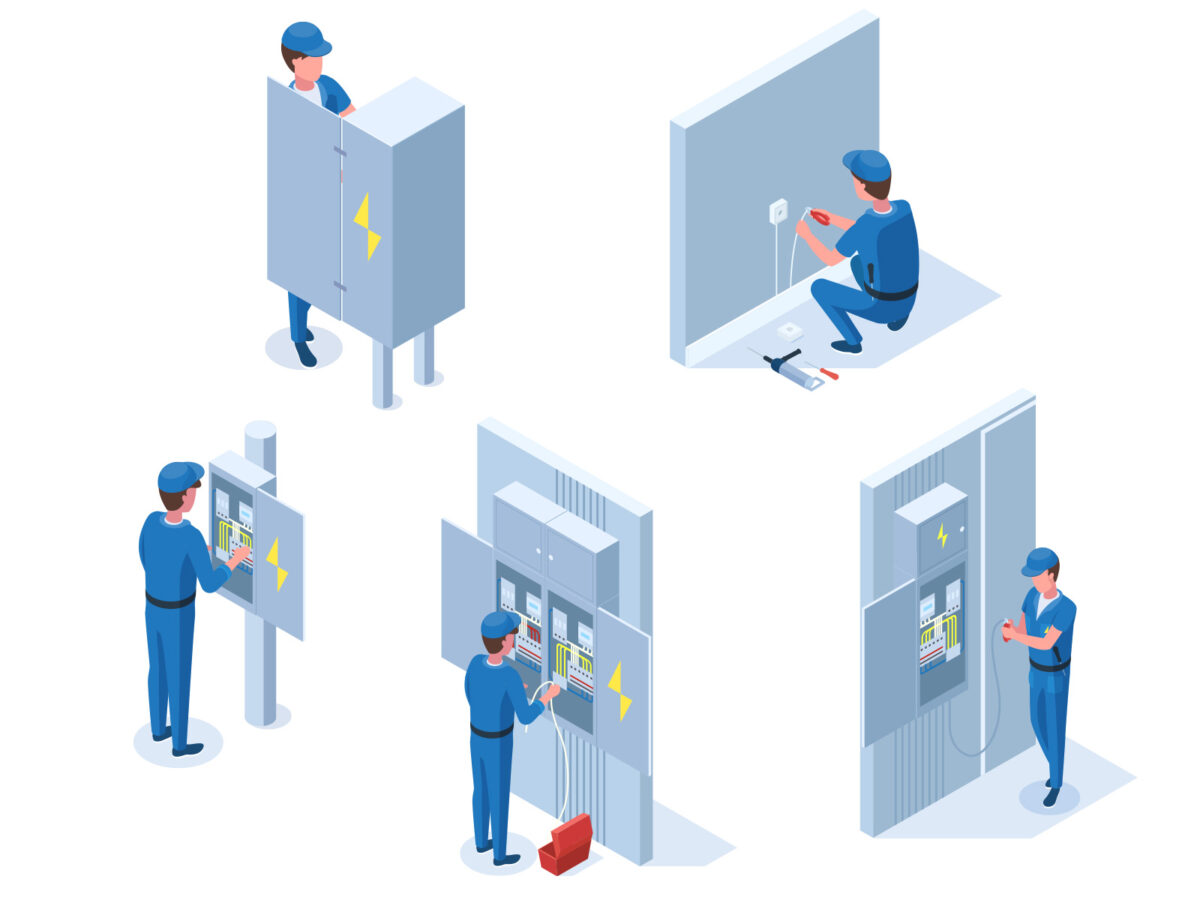
SHORT CIRCUIT COORDINATION STUDIES ARE CRITICAL TO THE SAFE AND RELIABLE OPERATION OF MODERN ELECTRICAL SYSTEMS
Our society depends heavily on access to safe and reliable electricity to power our utility, industrial, commercial, and institutional operations. However, the electrical networks designed to deliver this power are complex, requiring significant engineering and operational expertise to work well. And now, the push for sustainability demands that networks integrate variable and intermittent renewable energy sources, power electronics such as inverters, and distributed generation and microgrids, adding more uncertainty and risk to the integrity of the network.
A short circuit coordination study is an engineering review to assess an electrical system’s behavior when subjected to a short circuit condition. This study is pivotal in coordinating the appropriate system response to short circuit failures, maintaining safety, reliability, and efficiency, and avoiding unnecessary power outages.
SHORT CIRCUITS AND THEIR IMPACT
A short circuit is a fault condition occurring when a low-resistance pathway unintentionally bridges two points in an electric circuit. This pathway allows excessive current to flow through the circuit, bypassing the intended load path. Common causes of short circuits include insulation failure, damaged or faulty wiring, and accidental contact between conductive parts that operate at different voltages.
Short circuits can impact the operation of an electrical system in several ways. Excessive current can generate intense heat and fire that damages conductors, transformers, circuit breakers, and other components. The sudden release of energy accompanying a short circuit can result in electric shock, burns, and injuries caused by explosions and flying debris. Overcurrents activate protective devices designed to trip and isolate the faulty section of the circuit, often resulting in the shutdown of entire operations. Voltage drops and surges accompanying short circuit events affect the quality of the power supply and can damage sensitive electronic devices and destabilize the electrical system as a whole.
THE VALUE OF SHORT CIRCUIT COORDINATION STUDIES
Short circuit coordination studies simulate fault conditions to identify potential vulnerabilities within an electrical network that can shut down a system. Such simulations determine the magnitude of fault currents – with this information, protective devices like circuit breakers, relays, and fuses can be sized and rated correctly to protect the electrical system. The analysis confirms the resistance and reactance of transformers, generators, cables, overhead lines, and other components since these impedances directly impact the magnitude of fault currents and voltage drops during fault conditions. Understanding the likelihood and extent of such voltage variations is critical to operating voltage-sensitive equipment safely and maintaining system stability.
The types of faults that can occur, such as three-phase, line-to-line, line-to-ground, and double line-to-ground, impact the system in distinct ways. Identifying their characteristics is essential to ensuring the system responds appropriately to the fault conditions that arise from each by coordinating the action of protection devices. The study assists in making sure the settings of protective devices will isolate faulted sections without needlessly disrupting the entire electrical system.
WHAT A SHORT CIRCUIT COORDINATION STUDY INVOLVES
Short circuit coordination studies delve into various aspects of circuit design and operation essential to creating a robust network. They involve:
- Identifying overcurrent conditions and calculating fault current magnitude. With such information, system designers and operators can identify protective devices that may not be adequately sized to handle the expected overcurrent load.
- Assessing protective device coordination. A properly designed network will trigger the protective devices closest to the short circuit to isolate the faulty section. Getting this step right reduces or eliminates unnecessary power outages and damage to connected systems.
- Evaluating equipment tolerance to fault currents arising due to short circuits. Each piece of equipment has a maximum fault current rating it can withstand without damage. A short circuit coordination study identifies equipment vulnerable to damage under short circuit conditions so that they can be replaced or upgraded, bolstering overall system resilience.
- Highlighting flaws and weaknesses in the electrical system design. Proper electrical architecture will ensure adequate separation of critical circuits and sufficient grounding while avoiding over-reliance on single points of failure.
- Safeguarding compliance with standards and regulations. Such rules govern the adequacy of electrical systems to provide safety and performance, especially under short circuit conditions.
- Informing preventative maintenance strategies. Short circuit coordination studies highlight components or system sections susceptible to fault conditions. Such insights can inform maintenance priorities to address vulnerabilities before they become problems.
- Enhancing system scaling and flexibility. For electrical systems undergoing expansion or modifications, short circuit coordination studies can identify new vulnerabilities that may arise and how such changes can affect existing fault dynamics. Then, designers can ensure the system remains stable, robust, and capable of adapting to new developments without sacrificing safety and performance.
TOOLS OF THE TRADE
Modeling an electrical system accurately requires advanced software simulation tools to generate useful results. Software such as ETAP (Electrical Transient Analyzer Program) and others allow experts to model complex electrical networks and simulate various fault scenarios, offering detailed insights into how the system will respond under various short circuit conditions.
IEEE and IEC standards and guidelines provide the methods and criteria for conducting short circuit coordination studies conforming to industry best practices and safety requirements. Increasingly, artificial intelligence and machine learning technologies are transforming the ability of short circuit coordination studies to analyze massive datasets and identify patterns, predict where faults may occur, and expose vulnerabilities in the electrical system that traditional analysis may miss.
In summary, short circuit coordination studies are an indispensable tool to optimize electrical system design and protective device coordination and prevent the unnecessary and costly impact of power outages.
At Global Power Systems, we perform short circuit coordination studies for our customers so they can rest easy at night, knowing their electrical system has been optimized for safe and reliable operation.
Contact us today to learn more about our turnkey backup power solutions and engineering capabilities that reduce your risk of loss from power outages.